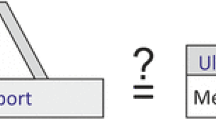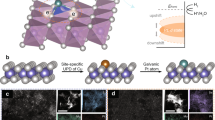Abstract
Electron transfer from transition metal (TM) catalysts deposited on support to reaction molecules adsorbed is a key step in many catalysis reactions. Electron donation from a certain type of support and/or a promotor much enhances this electron transfer. In this paper the author considers requirements for efficient support materials based on a contact resistance between support and metal catalyst, showing metallic nature of the support is much favorable for this purpose. The origin of high performance in cesium promotors is suggested to be electride nature of their suboxides derived from the salts under the reaction conditions. TM-loaded alkali(A)/alkaline earth (AE) hydrides work as efficient catalysts. Since TM forms stronger or comparable bonding with H− compared with A/AE-H bonding, the formation of H-vacancy is much enhanced by TM-deposition. Thus, their high activity may be understood by the formation of surface electride, which serves as an electronic promotor, by deposition of TM on these hydrides. Improvement of electron transfer may be expected for insulating supports if Fermi-level pinning occurs at surface defects created by TM-deposition.
Graphic Abstract

Similar content being viewed by others
References
Nørskov JK (1991) Electronic factors in catalysis. Prog Surf Sci 38(2):103–144
Jacobsen CJ, Dahl S, Hansen PL, Törnqvist E, Jensen L, Topsøe H, Prip DV, Møenshaug PB, Chorkendorff I (2000) Structure sensitivity of supported ruthenium catalysts for ammonia synthesis. J Mol Catal A: Chem 163(1–2):19–26
Szmigiel D, Bielawa H, Kurtz M, Hinrichsen O, Muhler M, Raróg W, Jodzis S, Kowalczyk Z, Znak L, Zieliński J (2002) The kinetics of ammonia synthesis over ruthenium-based catalysts: the role of barium and cesium. J Catal 205(1):205–212
Hosono H, Kitano M (2021) Advances in materials and applications of inorganic electrides. Chem Rev 121:3121–3185
Kitano M, Inoue Y, Yamazaki Y, Hayashi F, Kanbara S, Matsuishi S, Yokoyama T, Kim S-W, Hara M, Hosono H (2012) Ammonia synthesis using a stable electride as an electron donor and reversible hydrogen store. Nat Chem 4(11):934–940
Dye JL (2009) Electrides: early examples of quantum confinement. Acc Chem Res 42(10):1564–1572
Matsuishi S, Toda Y, Miyakawa M, Hayashi K, Kamiya T, Hirano M, Tanaka I, Hosono H (2003) High-density electron anions in a nanoporous single crystal. [Ca24Al28O64]4+(4e-). Science 301(5633):626–629
Toda Y, Yanagi H, Ikenaga E, Kim JJ, Kobata M, Ueda S, Kamiya T, Hirano M, Kobayashi K, Hosono H (2007) Work function of a room-temperature, stable electride [Ca24Al28O64]4+(e)4. Adv Mater 19(21):3564–3569
Kanbara S, Kitano M, Inoue Y, Yokoyama T, Hara M, Hosono H (2015) Mechanism switching of ammonia synthesis over Ru-loaded electride catalyst at metal–insulator transition. J Am Chem Soc 137(45):14517–14524
Yu AYC (1970) Electron tunneling and contact resistance of metal-silicon contact barriers. Solid-State Electron 13(2):239–247
Matsuishi S, Kim SW, Kamiya T, Hirano M, Hosono H (2008) Localized and delocalized electrons in room-temperature stable electride [Ca24Al28O64]4+(O2–)2–x (e-)2–x: analysis of optical reflectance spectra. J Phys Chem C 112(12):4753–4760
Sushko VP, Shluger AL, Catlow CRA (2000) Relative energies of surface and defect states: ab initio calculations for the MgO(001) surface. Surf Sci 450:153–170
Cowley AM, Sze SM (2004) Surace sstates and barrier height of metal-semiconductor system. J Appl Phys 37:3212–3220
Aika K, Shimazaki K, Hattori Y, Ohya A, Ohshima S, Shirota K, Ozaki A (1985) Support and promoter effect of ruthenium catalyst: I. Characterization of alkali-promoted ruthenium/alumina catalysts for ammonia synthesis. J Catal 92(2):296–304
Connor GP, Holland PL (2017) Coordination chemistry insights into the role of alkali metal promoters in dinitrogen reduction. Catal Today 286:21–40
Simon A (1979) Alkali metal suboxides: intermediates between salts and metals. J Solid State Chem 27(1):87–97
Raróg W, Kowalczyk Z, Sentek J, Składanowski D, Zieliński J (2000) Effect of K, Cs and Ba on the kinetics of NH3 synthesis over carbon-based ruthenium catalysts. Catal Lett 68(3):163–168
Ong PV, Johnson LE, Hosono H, Sushko PV (2017) Structure and stability of CaH2 surfaces: on the possibility of electron-rich surfaces in metal hydrides for catalysis. J Mater Chem A 5(11):5550–5558
Kitano M, Inoue Y, Ishikawa H, Yamagata K, Nakao T, Tada T, Matsuishi S, Yokoyama T, Hara M, Hosono H (2016) Essential role of hydride ion in ruthenium-based ammonia synthesis catalysts. Chem Sci 7(7):4036–4043
Nakao T, Tada T, Hosono H (2019) First-principles and microkinetic study on the mechanism for ammonia synthesis using Ru-loaded hydride catalyst. J Phys Chem C 124(3):2070–2078
Inoue Y, Kitano M, Kishida K, Abe H, Niwa Y, Sasase M, Fujita Y, Ishikawa H, Yokohama T, Hara M, Hosono H (2016) Efficient and stable ammonia synthesis by self-organized flat Ru nanoparticles on calcium amide. ACS Catal 6(11):7577–7584
Kim SW, Hosono H (2012) Synthesis and properties of 12CaO·7Al2O3 electride: review of single crystal and thin film growth. Phil Mag 92(19–21):2596–2628
Matsuishi S, Nomura T, Hirano M, Kodama K, Shamoto SI, Hosono H (2009) Direct synthesis of powdery inorganic electride [Ca24Al28O64]4+(e−)4 and determination of oxygen stoichiometry. Chem Mater 21(13):2589–2591
Acknowledgements
The author thanks Dr. Takuya Nakao for DFT calculations and Mr. Hironobu Sugiyama for help in contact resistance calculation. This work was supported by a grant from the MEXT Element Strategy Initiative to Form Core Research Center (No.JPMXP0112101001) and JSPS Kakenhi Grants-in-Aid (No.17H06153). Finally, the author appreciates Prof. Hans-Joachim Freund for providing me an opportunity to write this perspective.
Author information
Authors and Affiliations
Corresponding author
Additional information
Publisher's Note
Springer Nature remains neutral with regard to jurisdictional claims in published maps and institutional affiliations.
Rights and permissions
About this article
Cite this article
Hosono, H. Electron Transfer from Support/Promotor to Metal Catalyst: Requirements for Effective Support. Catal Lett 152, 307–314 (2022). https://doi.org/10.1007/s10562-021-03648-y
Received:
Accepted:
Published:
Issue Date:
DOI: https://doi.org/10.1007/s10562-021-03648-y












